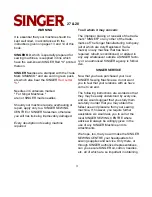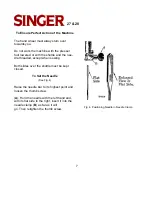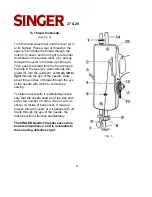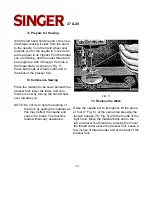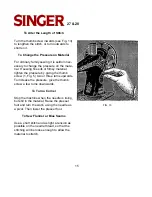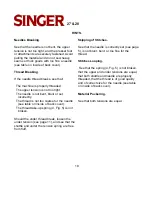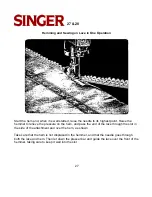
14
27 &
28
To Regulate the Tensions
Correct Stitch.
For ordinary stitching, the tension on the
upper and under threads should be equal,
so as to lock both threads in the centre of
the work, as above.
If either tension is stronger than the other,
imperfect stitching will be the result, thus:
Needle Thread Tension
too weak.
Needle Thread Tension
too strong.
Lower the presser foot and turn the thumb
nut in the direction illustrated by the arrow to
increase the tension or in the opposite direc-
tion to lessen it.
As all machines are correctly adjusted before
leaving the factory, the under tension seldom
requires to be altered, but if this becomes
necessary tighten the screw near the point of
the shuttle (see Fig. 7) to increase the ten-
sion, or loosen it slightly to lessen the ten-
sion.
Always use thread with corresponding size of
needle as per Table on page 3 of cover.
Fine fabrics require a light tension, while
heavy materials want more tension to obtain
a perfect stitch.
The tension on the needle thread should be
regulated only when the presser foot is down.
A correct stitch can usually be obtained by
varying the tension on the needle thread (see
Fig. 12).
FIG. 12
Summary of Contents for NO. 28
Page 4: ...4 27 28...



